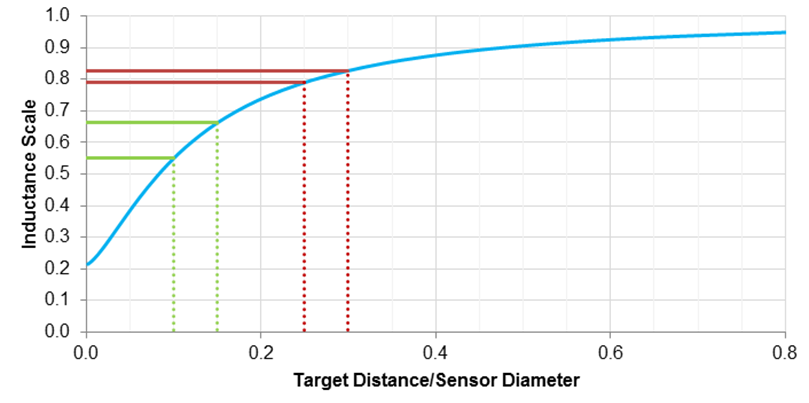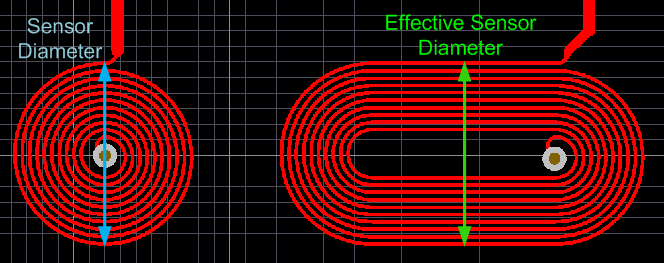SNOA961A February 2017 – February 2023 LDC2112 , LDC2114 , LDC3114 , LDC3114-Q1
- Inductive Touch System Design Guide for HMI Button Applications
- 1Mechanical Design
- 2Sensor Design
- 3Summary
- 4Revision History
2.4.1 Sensor Physical Size
Inductive touch functionality is based on the sensor’s magnetic field interacting with a metal surface. Therefore the magnetic field must reach the surface of the metal. The magnetic field ‘size’ is based on the size of the inductor—the larger the inductor, the larger the generated magnetic field.
 Figure 2-4 Inductance Shift vs Target Distance
Figure 2-4 Inductance Shift vs Target DistanceFor a circular inductor, the size of the inductor is the diameter. For a non-circular inductor, sensor diameter is effectively the minimum axis size.
 Figure 2-5 Sensor Diameter for Circular and Racetrack Sensor Coils
Figure 2-5 Sensor Diameter for Circular and Racetrack Sensor Coils